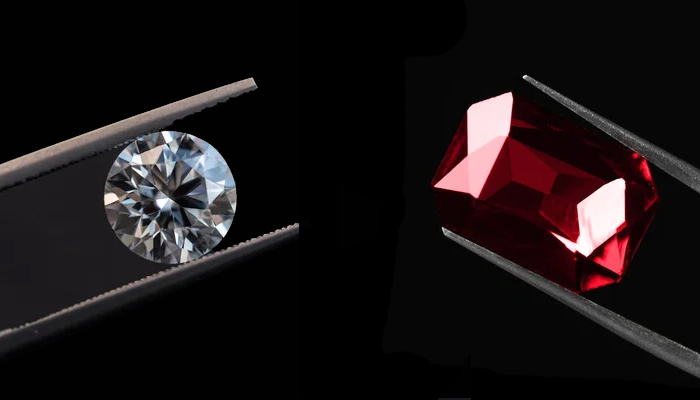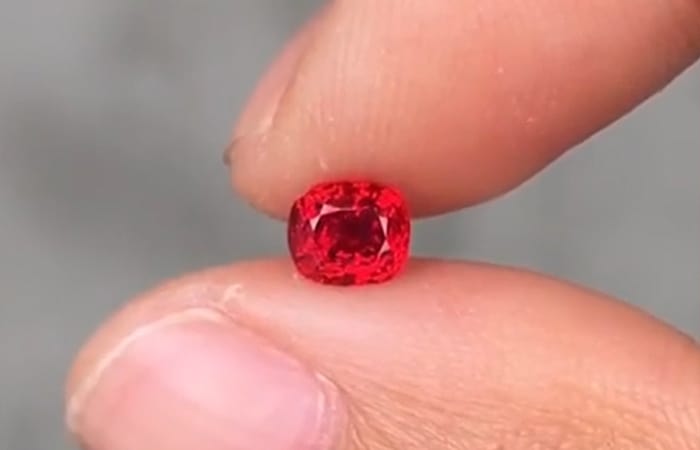When it comes to jewelry, there are a few different precious stones that people usually think of. Diamonds and rubies are two of the most popular, but which one is more expensive? Is there really a difference in price between these two stones?

There is a big difference in price between diamonds and rubies. In fact, diamonds are often times much more expensive than rubies. This isn’t always the case, but it is generally true that diamonds are more expensive than rubies.
There are a few reasons for this:
The first reason has to do with rarity. Diamonds are rarer than rubies, so they tend to be more expensive. Second, diamond jewelry is seen as being more luxurious and high-end than ruby jewelry. Finally, diamond jewelry can last longer and hold its value better than ruby jewelry.
Factors that Affect the Price of Rubies and Diamonds
When it comes to the prices of rubies and diamonds, there can be quite a difference. In general, diamonds are more expensive than rubies. However, there are many factors that go into pricing these gems, so the cost of each can vary greatly.
Mining Locations of Rubies and Diamonds
The Mining Locations of rubies and diamonds have a direct impact on their prices. The location of the mines dictates not only how accessible the gems are but also the level of security and regulation. For example, Madagascar is known for its high-quality rubies, while Canada is known for its large and valuable diamonds.
Mining location can also affect how pure the gemstones are. Some locations are famous for their high-quality gems, while others are known for their lower quality stones. The quality of a ruby or diamond can affect its price by thousands or even millions of dollars.

Rarity of Rubies and Diamonds
The rarity of rubies and diamonds affects their price. The prices for these gemstones vary greatly, but the rarest gems tend to be the most expensive. For example, a rare pink diamond can sell for millions of dollars, while a ruby might only be worth a few thousand.
This is because the rarity of a gemstone drives up its price. Diamonds and rubies are two of the most popular gemstones in the world, so there is a lot of demand for them. But since they are both rare, the price for these gems is high.
It’s important to note that not all diamonds and rubies are created equal. There are different grades of these gemstones, and the more rare they are, the more expensive they will be. So while a common ruby might only cost a few thousand dollars, a rare ruby could fetch millions at auction.
Color of Rubies and Diamonds
When it comes to the price of gems, color is key. The two most valuable colors for diamonds are blue and pink. These colors are rare and fetch a high price because there are fewer of them in the market.
Rubies, on the other hand, come in a variety of colors. The most valuable ruby is called a “pigeon blood” because it has a deep red color that is almost black. Other valuable ruby colors include pink and orange. The color of a gemstone can affect its price by up to 50%.
Cut of A Ruby or Diamond
When it comes to diamonds and rubies, the cut is everything. The gemstone’s cut affects its price more than any other factor. This includes the size of the diamond or ruby, as well as its color and clarity.
A well-cut diamond will sparkle brightly and look more expensive than a poorly cut diamond of the same size. The same is true for rubies. A well-cut ruby will have more fire and brilliance than a poorly cut ruby of the same size.
The quality of the cut is determined by how well the gemstone has been faceted. The angles and placement of the facets affect how light reflects off the stone. A well-cut gemstone will reflect light in all directions, while a poorly cut gemstone will not reflect light very well.
Conclusion
In conclusion, while both ruby and diamond are expensive, diamond is more expensive. Diamond is also a harder gemstone than ruby. However, ruby is considered more valuable than diamond because of its rarity.



